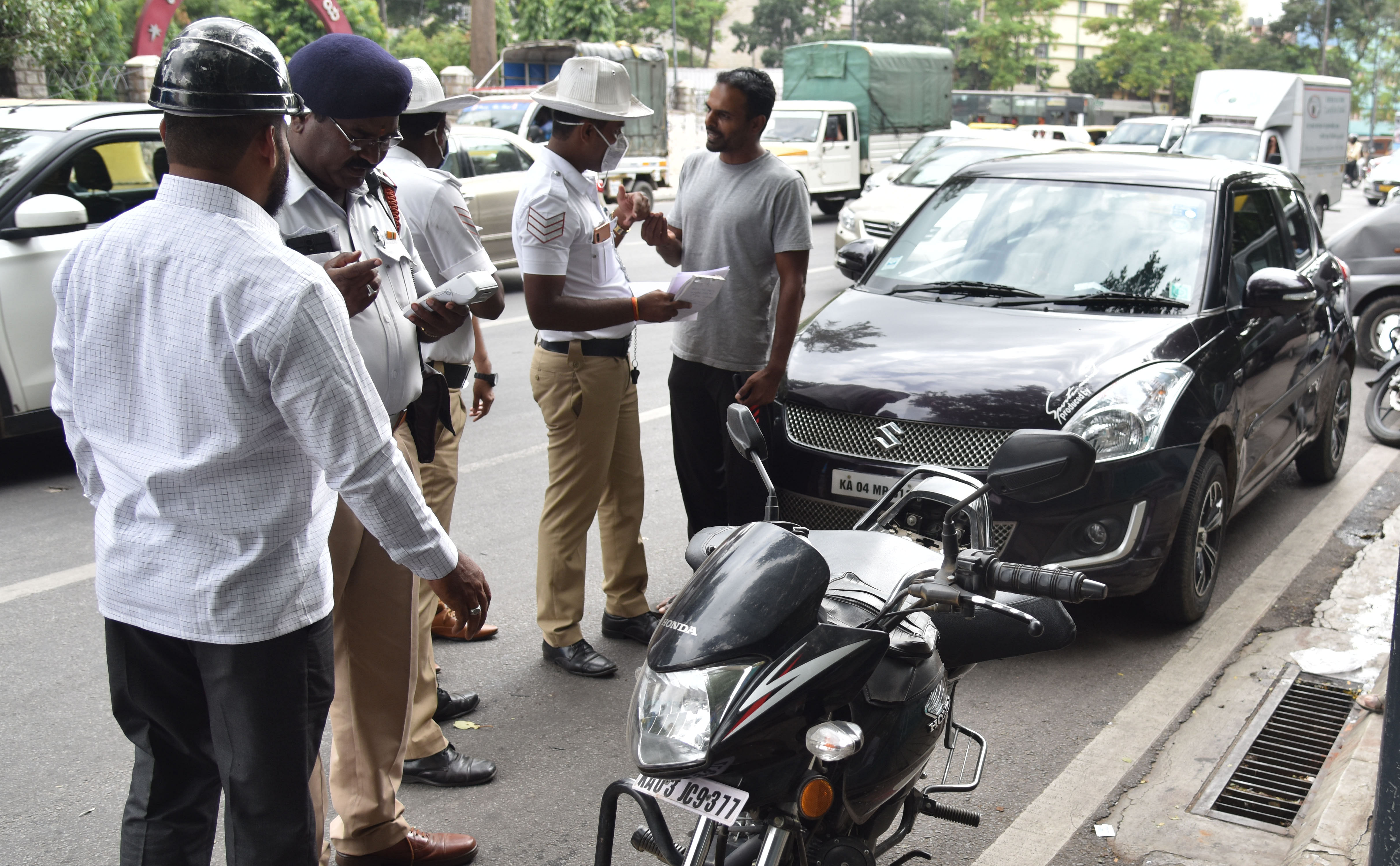
Fines for traffic offences have just gone up dramatically, and a widespread fear in Bengaluru is that bribery will thrive more than ever before.
The steep hike in fines could reduce fatalities on the road, says Dr Ashish Verma, associate professor, civil engineering, Indian Institute of Science. The way to reduce human intervention and bribery is to rely on technology 24/7, 365 days a year.
He recommends an auto-challaning system, which provides visual proof of the offence. “The effectiveness of the revised fines depends on the implementation mechanism,” he says. He believes effective use of technology will reduce the temptation to bribe.
Studies conducted by IISc say speeding, driving on the wrong side and signal jumping are major causes of death.
Rs 100 cr a year
Additional Commissioner of Police (traffic) P Harishekaran takes pride in the technology at hand, and how it helps the police mop up huge amounts. “We collect at least Rs 100 crore in fines every year,” he told Metrolife.
Traffic police use 600 personal digital assistant (PDA) gadgets to crack down on offenders. They have installed 1,000 cameras across the city. A hundred of these capture signal jumping. “When a vehicle jumps a signal, this camera records the violation and sends it to the traffic management centre, which in turn, generates a challan and sends it to the offender,” he says.
Mostly in suburbs
Technology is not enough. A sound knowledge of the city and its problems is important to enforce such landmark decisions, says Prof M N Sreehari, traffic advisor and consultant.
“Offences are committed mostly in the suburbs and not in the heart of the city where the speed has come down drastically. And we don‘t see any police presence in the suburbs,” he says.
The Bengaluru police don‘t have enough men to monitor the 48,000 odd traffic junctions. The existing cameras are inadequate to keep an eye on the growing vehicular population, he told Metrolife.
He believes that the tendency to grease the palms of cops is likely to increase with the hike in penalties.
“The earlier fine of Rs 100 was small. People usually carry anything between Rs 200 and Rs 500. So, if they are caught and if the fine is Rs 1,000, they are more likely to pay what they have as a bribe than get caught in a long-drawn legal procedure,” says Sreehari.
On the other hand, V Ravichandar, urban expert, does not find the revisedpenalties too high. “Talking on the mobile while driving amounts to putting others at mortal risk. It needs to attract provisions of the criminal code, just like driving on footpaths,” he says.
Educated offenders
Dr K Mohanan Nambiar, chief traffic warden, has managed weekend traffic on Bengaluru roads for 27 years. He says most violators of traffic rules are educated and well-informed. “Most pedestrian fatalities are caused by the absence of pedestrian paths. People are forced to walk on the road and endanger their lives,” he says.
Not lasting
Dr Divyashree K R, consultant psychiatrist, Aster CMI, says high fines instil fear but may not provide a lasting solution to the problem of irresponsible driving. People who don’t respect the law don’t think twice before bribing their way out, she says.
Auto, cab drivers: Where to park to pick up passengers?
Tanveer Pasha, President, Ola Taxi for Sure Uber Drivers‘ and Owners‘ Association
“Cab drivers do stop in ‘no parking’ zones, but only to pick up passengers. “We don‘t have a dedicated taxi stand. When a customer books a cab from a no-parking zone, we end up there,” he says. “Police then fine us.” Tanveer estimates about 80 per cent of all motorists caught for traffic offences pay bribes and get away.
Sampath, Adarsha Auto Union and Taxi Drivers’ Union, finds the police heartless in dealing with auto drivers.
“They talk more rudely to us and slap three or four cases the moment they catch us. We have to stop where passengers tell us to stop, and policemen use the opportunity to penalise us,“ he says. RTO and police procedures take for ever. While drivers are waiting for their papers, police impose fines of up to Rs 10,000 on them. Drivers are poor, and this is not fair, says Sampath.
(Additional reporting by Samhita B Atrey)
How much?
Exceeding speed limit
Earlier ~300
Now ~1,000 (self-drive),
~500 (driver).
Driving without insurance
Earlier ~500
Now ~1,000
Wrong parking or parking dangerously
Earlier ~100
Now ~1,000
Driving vehicle without registration
Earlier (1st time) ~1,500
(2nd time) ~3,000
Now
(1st time) ~5,000
(2nd time)~10,000
Using cellphone while driving
Earlier ~300
Now ~1,000 (1st time) ,
Rs 2,000 (subsequent)